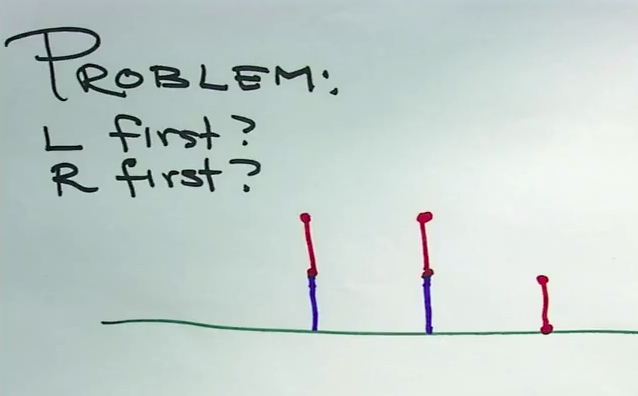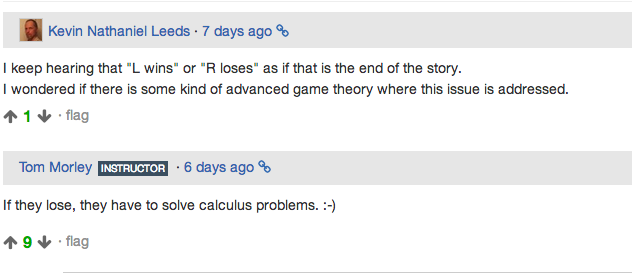Saylor’s CS201: Elementary Data Structures follows their three-course introduction to programming sequence. The course is a standard data structures course, covering arrays, stacks, queues, graphs, and hash tables, and their implementation. As in previous courses, some segments were taught comparatively. For instance, implementations of a stack were shown in C, C++, and Java. This is a nice touch, although those languages are a bit too similar to lead to interesting insights.
I don’t think the C-family of languages is particularly suited to teaching data structures and algorithms to beginners, though, since they introduce a fair amount of “accidental difficulty” that is due to the syntactic complexity of those languages and not the subject. As a consequence, two of the eight units dealt with pointers and references in C++, and dynamic memory allocation, respectively.
Apart from data structures, an intro to the analysis of algorithms (big O) was provided, which was subsequently applied to a number of searching and sorting algorithms. A prominent omission among the sorting algorithms was quicksort, though.
Overall, this course is a great complement to the many introductory programming/CS intro courses that are available online. I just checked the EdX, Udactiy, and Coursera catalogues, and there is still no dedicated course on data structures available. This means that for the time being, Saylor’s offering fills a void.
My only criticism relates to the final exam. Saylor continually improves their courses, and is very receptive to feedback, so there is a good chance that the few mistakes I spotted will be corrected soon. I don’t want to discuss specific exam questions, but to give you one example: one question asks you to identify a sorting algorithm that is unsuitable for large arrays. However, they all exhibit quadratic runtime and thus were all unfit. Yet, the answer choice “none” was seen as wrong. The expected answer was presumably that bubble sort was unsuitable for that task, but I don’t want to select an answer choice that conflicts with reality just because the examiner (or grading script) might expect it. Some other questions were on C++ syntax, which I found questionable in the context of data structures. This wasn’t a big issue, but it surprised me nonetheless. Thus, I think that it would be helpful if Saylor either offered a sample exam, or expanded their list of learning outcomes to reflect the content of the exam as well.
[Addendum: I emailed Tanner Huggins at Saylor Foundations who quickly replied to me, saying that he addressed the issues I’ve brought up. He also wrote that Saylor courses eventually go through a peer-review process, where feedback on courses and exams is solicited from qualified faculty members, and that Elementary Data Structures hasn’t gone through this process yet.]



